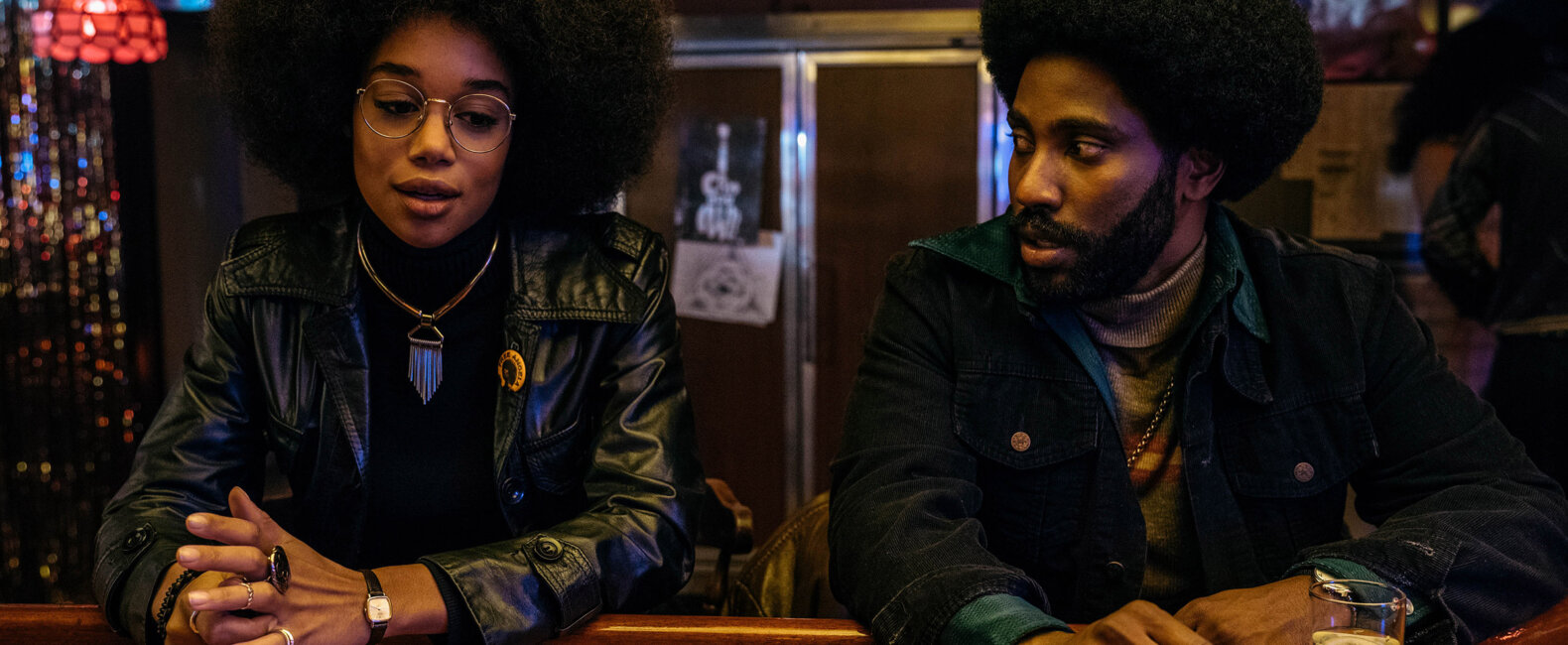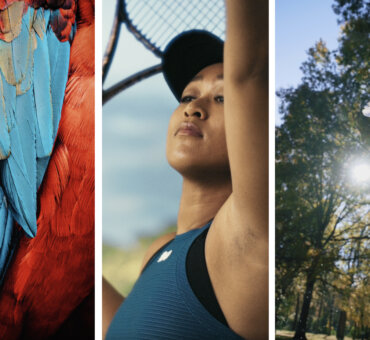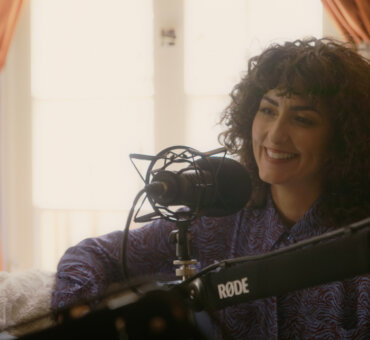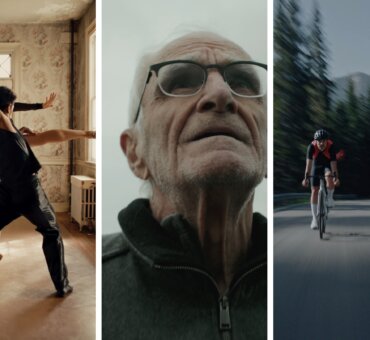Chayse Irvin, CSC is defined by contradiction: “I’ll shoot black and white. I’ll shoot color. I’m mixing things. I’m breaking the rules of image continuity,” he told us. But, the more you learn about him, the more you see that he’s not contradicting for the sake of contradiction. He’s disciplined and methodical, which makes him less a man of contradiction and more a man of paradox. There’s real meaning in it.
Within just a few years, Irvin has become a familiar name across the film and music landscape, particularly after his work as the director of photography for Beyonce: Lemonade and then Spike Lee’s Oscar-winning film BlackKklansman.
His unique visual style obviously distinguishes him as a cinematographer, but it’s his uncanny ability to collaborate that really sets him apart. This collaboration works because he’s as driven and prepared as anyone, yet embodies a curiosity and humility that allows every shoot and project to transform.
Irvin talked with us from his New York City apartment about his creative process and how his approach came to bear on recent projects. He shared opinions about the use of symbolism in cinema, jazz music, and the aesthetic of director Terrence Malick.

Musicbed: What are you working on right now?
Chayse Irvin: I’ve been collaborating with a director named Andrew Dominik for a film that he’s been trying to make for a very long time, called Blonde, which is based off a novel, a fictional telling of Marilyn Monroe’s life about childhood trauma and how that affected almost every interaction in her life.
That sounds interesting.
Yeah. Her mother was diagnosed as a paranoid schizophrenic and was in a mental institution. She never knew her father. Marilyn had these love affairs and marriages with men who were much older than her. I think that’s kind of a great basis on which to construct the cinematic language because it’s really an intricate map of emotions and interpersonal relationships. Andrew picking me as a cinematographer is a step in that direction because I use a lot of contradictions in my work.
Did you collaborate well with Spike Lee for BlackKklansman?
It was unique, to be honest with you. Right off the bat, we were starting with some of the most difficult scenes in the film, particularly the ending of the movie when the explosion goes off, which is really technical. I promoted that idea of shooting it first because I knew we were going to be shooting upstate.
Originally, we had the tougher work scheduled for the second week, but it was causing these issues with time and actor availability, and I was like, “Well, we should just start with it.” Spike kind of looked at me cockeyed like, “What? You’re crazy.” But he was down.
We worked really well together. I was totally in control of the technical stuff in the first half of the movie, on location. Then when we got to stage, he took the reigns and starting guiding it. It was almost like we were in a jazz group. It’s hard to describe, but there were moments where John Coltrane would do like a 45-minute solo and then Miles Davis would go and do his thing. We were feeding off one another. Spike was inspired by how much effort my team was putting into each scene and how we had things under control. Then he started getting amped up.
Did that surprise you?
I wasn’t really prepared for it because I think when you’re working with somebody who you’ve never worked with before, you don’t really know how it’s going to go down, how much control they want if they have a distinct vision for something. When we initially shot listed the film, it really only took us an hour and a half. I was kind of scared given how quickly that process went. But despite the unknowns, I came to production prepared. I get fueled in making sure every detail and intention on set is done right and really special. When I don’t feel like we’re getting it, I’m not quick to move on. I try to push the director, whoever is collaborating. That creates a bar that everyone needs to hit.


How do you creatively push yourself on commercial projects?
For the longest time, I didn’t really see the difference and approached commercials with the same enthusiasm I would a feature film. But, reflecting on it, I would only really choose commercials that have meaning or a story that is interesting. A guy who I really love working with, Eliot Rausch, selects his projects off who he is helping. He casts real people. For example, he would cast the kid who is an underdog, who needed the money. He uses his projects as a way to do good things in his life.
My perspective has never been, “how do I sell a product?” I did a couple of those commercials early on — closeup shots of a product — but I became repulsed by it. Not because it’s unethical, but just because I didn’t feel desire or creativity. I just wasn’t getting anything out of it. I wasn’t advancing my style or skills.
That’s why it’s almost more important what you say “no” to something because when you say “yes” to something, you’re saying “no” to something else. I made a conscious choice to turn down anything that I wasn’t really devoted or inspired by.
What does it look like for you to stay inspired as a cinematographer?
On a day-to-day basis, I’m consuming cinema, maybe some older films. I listen to a lot of jazz music. I collect photography books. On the set, it’s a totally different scenario, in which you’re forced to stay inspired. To me, that’s about creating certain constraints in what you’re executing.
How do you create those constraints for yourself?
One of the main reasons I like to shoot 35 millimeters isn’t necessarily because of the aesthetic. It creates a series of constraints around the production and the way I have to work that challenge me intensely. Instantly, I have much more determination in the execution that translates into ideas, grammar, and expression.
Maybe I’m expressing a more minimalistic approach simply because my camera is heavy and it’s going to be difficult to move. With digital, you run around with a camera, shooting all these shots, but they don’t have as much thought. They don’t have the intention behind it. Freedom actually creates constraints.
Even on the set, I’m always trying to surprise people, like my directors. I want to do things that we’ve never talked about. I want to pull out a light and try something that wasn’t in the discussion, to see how all the elements react together. There may be some sort of symbolic meaning that you and the director talked about, but I actually really don’t like symbolism.
Even on the set, I’m always trying to surprise people, like my directors. I want to do things that we’ve never talked about.
Why is that?
I remember working on a movie a long time ago. I ended up leaving the film about halfway in. The pre-production phase really didn’t feel right because we were talking about the meaning behind every single element of the film. We were assigning meanings and emotions to every single element. When we started executing it, it came off really contrived. It’s almost like our ideas or what we conceived in our head took precedence over everything else and it just looked flat. It wasn’t surprising anyone. It didn’t defy expectation.
If you totally put yourself in the box, it’s going to end up feeling very flat. You know, sometimes directors can have a really bad reaction to an initial idea, and then see it later, and be like, “Holy, crap.” Because they’re in the edit. They’re going to be like, “Whoa. I never thought of that scene like that. It’s really interesting and special.” Then all of a sudden, you’re feeding off this energy. I always like to have surprises.
Speaking of symbolism, how do you feel about Terrence Malick?
Honestly, when I saw Tree of Life, I was blown away. In The New World, one of the things that really made that work was using real people. With the Pocahontas actress, you could tell that you were watching something that was symbolic, but he’s not manipulating it to the extent that those characters are expressing a symbol. They’re actually just being real.
He does these things where it’s like really raw and realistic. That sequence in Tree of Life, when the little boy is going through the house looking through drawers, he’s broken into someone’s house, that’s a masterpiece right there. That whole scene is incredible. And if he was using an actor to do that, it might have come off contrived. The actors may be thinking about how they’re composing and it doesn’t always work.
I would associate a metaphor with a question, and associate a symbol with an answer. Malick is one of the most important directors around. But I think the things that I’ve responded to most strongly in his films bring up more questions than answers.




















































































